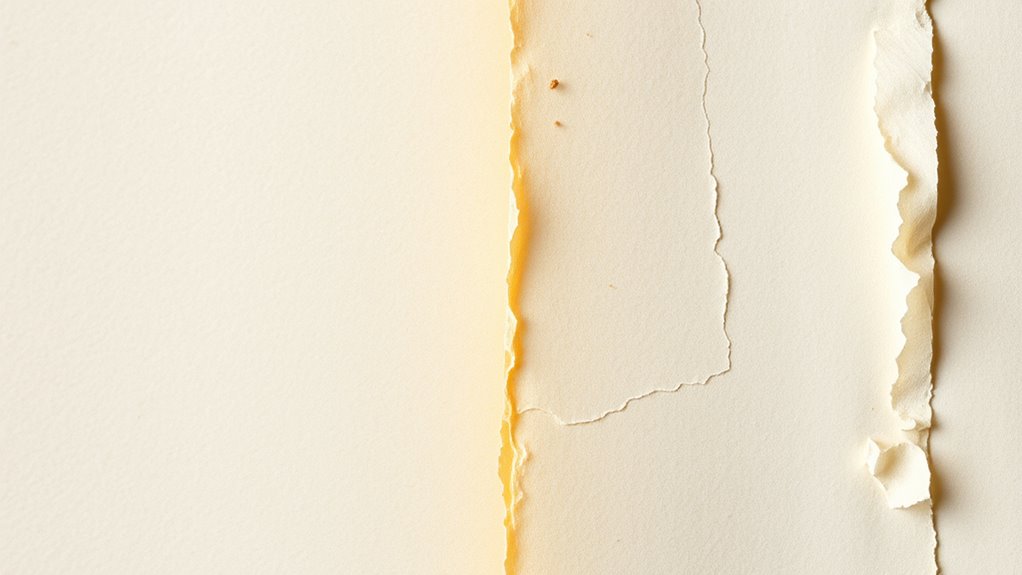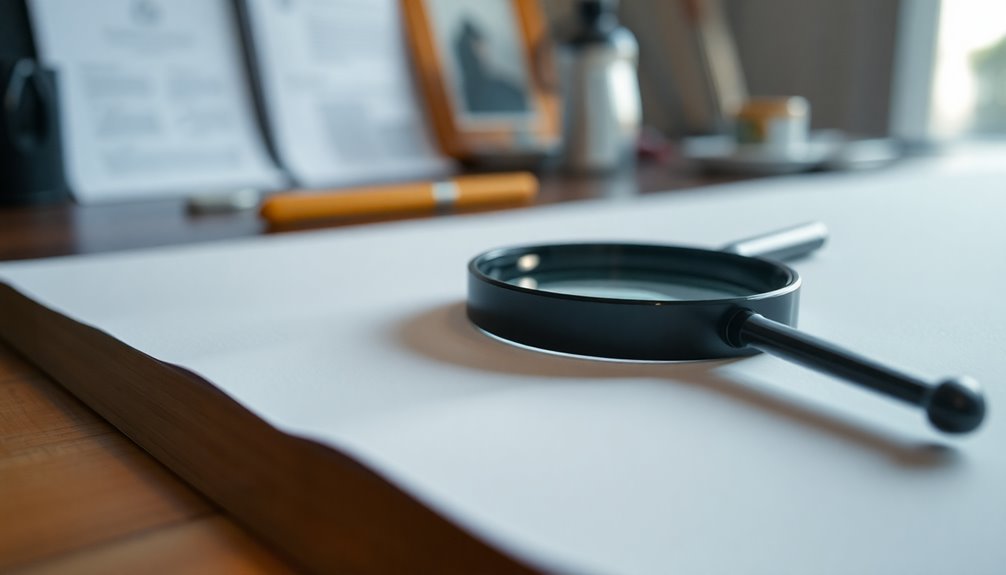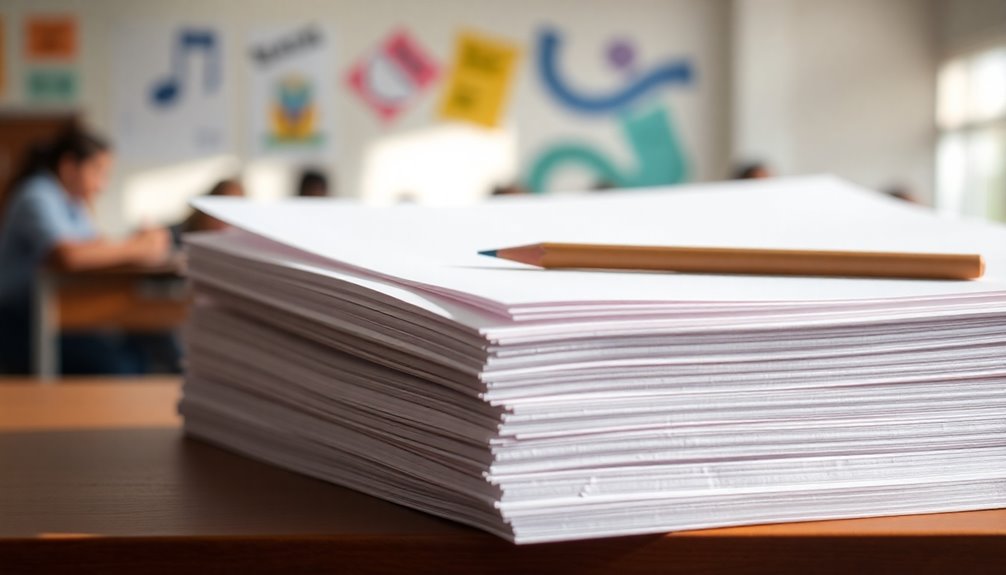Using acid-free paper is vital for preservation because it slows down deterioration caused by acidity. Unlike regular paper, acid-free materials maintain a neutral or slightly alkaline pH, which helps prevent fibers from weakening, yellowing, or becoming brittle over time. This extends the lifespan of your documents, photos, or artwork. If you want to learn more about how acid-free paper protects your treasures, keep exploring the details and best practices.
Key Takeaways
- Acid-free paper prevents fiber deterioration, extending the longevity of preserved documents and artworks.
- Neutral pH levels inhibit chemical breakdown, reducing brittleness and discoloration over time.
- Using acid-free materials ensures long-term stability and reduces damage caused by acidity.
- Proper identification and certification verify that paper is truly acid-free, essential for conservation.
- Incorporating acid-free supplies and best handling practices preserves the integrity of archival materials.
Understanding the Composition of Acid-Free Paper
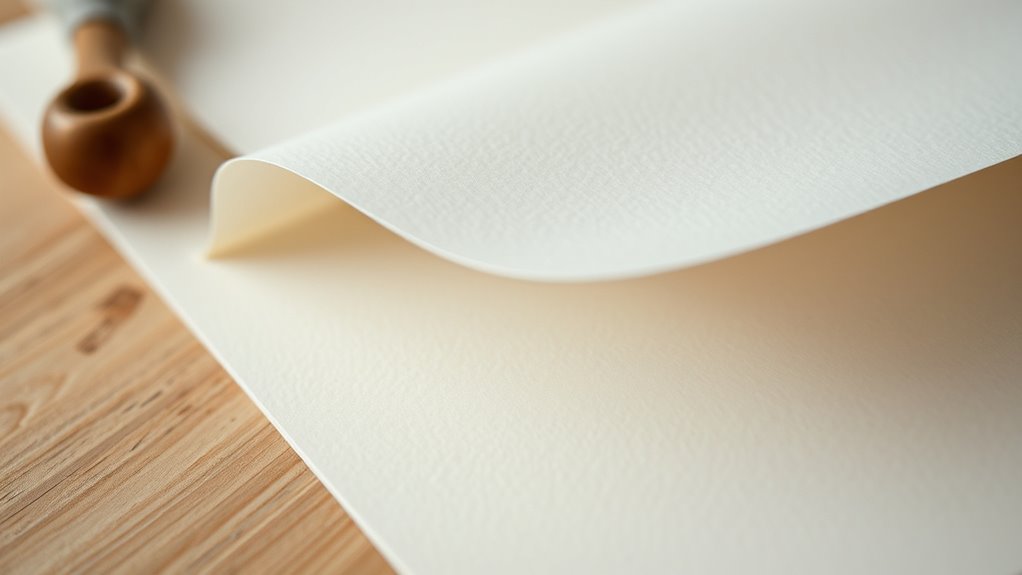
Understanding the composition of acid-free paper is key to appreciating its durability and preservation qualities. Acid-free paper typically has a neutral pH level, usually around 7, which prevents the acids from degrading the fibers over time. During manufacturing processes, manufacturers treat the paper with alkaline buffers like calcium carbonate or magnesium carbonate. These buffers neutralize any residual acids and maintain stable pH levels, ensuring the paper stays acid-free throughout its lifespan. The process often involves using purified cellulose fibers and controlling environmental factors during production. This careful balance of materials and techniques results in a product that resists yellowing, brittleness, and deterioration, making acid-free paper an ideal choice for preserving important documents, artwork, and archives. Additionally, understanding the composition of acid-free paper helps in selecting appropriate storage conditions to maximize its longevity, especially considering the potential effects of environmental pollutants and oxidative stress on paper materials. Proper storage environments further enhance the longevity of acid-free paper by reducing exposure to humidity and temperature fluctuations, which can accelerate deterioration. Recognizing material stability is crucial for implementing effective preservation practices over time. Being aware of environmental factors that influence paper aging allows for better preservation practices over time.
The Impact of Acidic Content on Paper Longevity
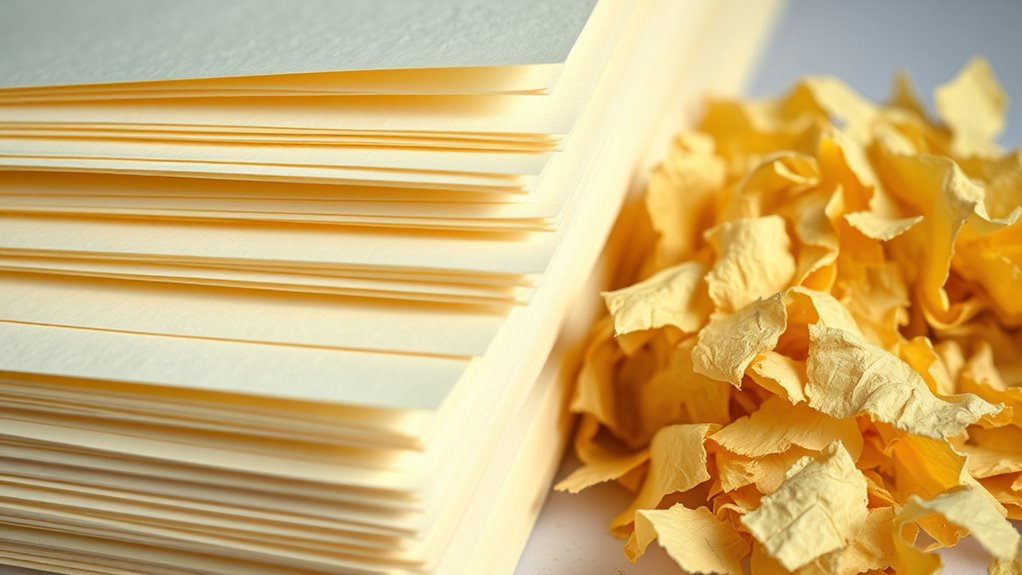
The presence of acidic content in paper markedly accelerates its deterioration over time. Acidic paper has a low pH balance, which weakens the fibers and promotes chemical reactions that degrade the material. As the acidity increases, the paper becomes more fragile, brittle, and prone to yellowing or discoloration. This process diminishes the paper’s chemical stability, making it less durable and more vulnerable to damage from environmental factors like humidity and light. Over decades, acidic content can cause pages to crumble or become illegible, especially when exposed to environmental factors. To preserve your documents and artifacts, maintaining a neutral or slightly alkaline pH balance is vital. Acid-free paper ensures better chemical stability, extending its lifespan and safeguarding your collection for future generations. Sound design techniques, such as controlled environmental conditions, can further aid in preservation efforts. Additionally, using acid-free materials in storage helps prevent further deterioration.
Benefits of Using Acid-Free Materials for Archiving
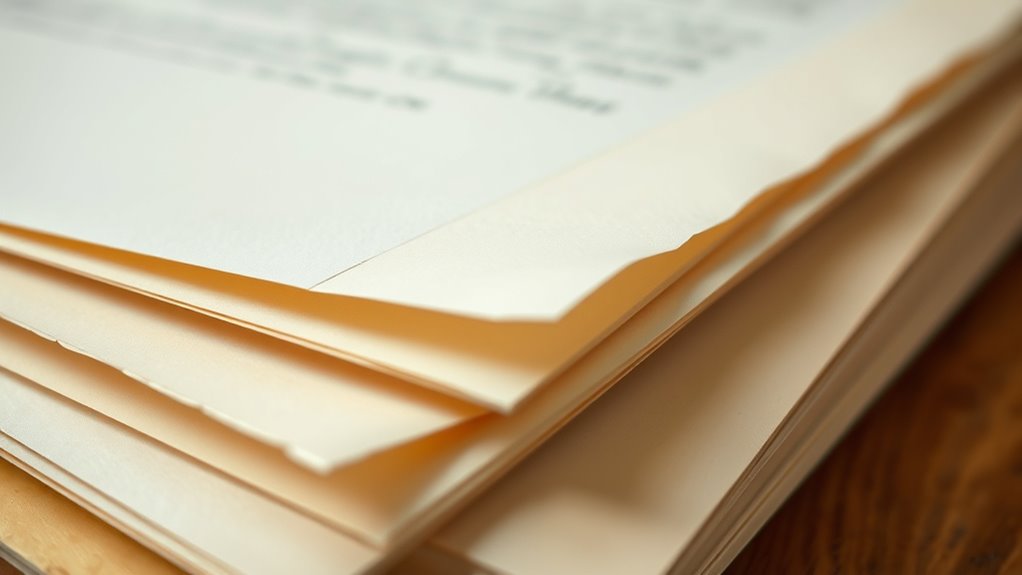
Using acid-free materials for archiving offers significant advantages because they naturally resist deterioration caused by acidity. Their archival quality ensures documents and photographs remain intact over decades, preventing the harmful effects of acidic degradation. This durability makes them ideal for preserving valuable or irreplaceable items. Unlike standard paper, acid-free materials do not produce acids that break down fibers, reducing brittleness and discoloration. The long-term stability of acid-free materials is essential for maintaining the integrity of historical records and artwork. Additionally, color accuracy in materials helps ensure that original hues and details are preserved over time. Incorporating acid-neutralizing properties further enhances their longevity, providing an extra layer of protection against environmental factors. Advances in archival science continue to improve the effectiveness of acid-free materials, ensuring even better preservation outcomes. By choosing acid-free materials, you minimize the risk of deterioration, ensuring your collections stay in excellent condition for future generations. Overall, the use of acid-free materials is a smart, effective way to protect your archival assets from inevitable acid-related damage.
How to Identify Authentic Acid-Free Paper

To guarantee you’re truly using acid-free paper for your archiving needs, it’s important to be able to identify authentic products. One reliable method is pH testing, which measures the paper’s acidity level. Authentic acid-free paper typically has a pH of 7 or higher, indicating neutrality or alkalinity. Look for labels that meet archival standards, as these ensure the paper is manufactured to preserve materials over time. You can perform a simple pH test with a testing strip or solution applied to a small sample. Additionally, check for certifications from reputable organizations, which confirm the paper’s acid-free nature. Avoid paper that appears yellowed or brittle, as these signs suggest acidity. Proper identification helps ensure your preservation efforts are effective and long-lasting. Recognizing archival quality papers is essential for ensuring durability and longevity in your preservation projects. Furthermore, understanding the chemical composition of acid-free paper can help you select the best materials for your specific needs, ensuring your documents or artworks remain preserved over time. Knowing the manufacturing process can also assist in distinguishing genuine acid-free paper from imitations.
Best Practices for Incorporating Acid-Free Paper Into Preservation Projects

When incorporating acid-free paper into preservation projects, it’s essential to plan carefully to guarantee long-term stability. Begin by evaluating the historical printing techniques used in the original materials, as this informs your conservation approach. Use appropriate conservation techniques that respect the artifact’s integrity, ensuring the paper’s compatibility and preventing chemical reactions. Handle documents delicately, avoiding unnecessary exposure to light, heat, or moisture. When storing or displaying items, use acid-free folders, sleeves, or mounts to prevent acid migration. Maintain a controlled environment with stable temperature and humidity levels. Properly documenting your process helps track preservation efforts. Additionally, understanding special occasions related to the materials can guide appropriate handling and presentation methods. Incorporating vetted preservation methods ensures that your efforts align with professional standards, enhancing the longevity of your collection. Being aware of acid migration and its effects is crucial for maintaining the integrity of preserved materials. Implementing acid-free storage techniques can significantly reduce the risk of deterioration over time. Following these best practices ensures that the historical significance remains intact and that your preservation efforts stand the test of time.
Frequently Asked Questions
How Does Acid-Free Paper Compare to Other Preservation Materials?
When comparing preservation materials, acid-free paper offers superior archival durability and material longevity. You’ll find it resists deterioration over time better than standard paper, which can yellow and weaken due to acidity. By choosing acid-free options, you guarantee your documents and artworks remain intact longer, protecting your investments. This makes acid-free paper an ideal choice for preservation, as it provides reliable, long-lasting support compared to other materials that may degrade more quickly.
Can Acid-Free Paper Be Recycled or Composted Safely?
Did you know that around 66% of paper waste could be recycled, yet many still face recycling challenges? Acid-free paper is generally safe to recycle and compost because it’s made without harmful acids and chemicals. You can confidently compost it, knowing it won’t release toxins. Just confirm it’s free of inks or coatings to avoid contamination. So, acid-free paper supports eco-friendly disposal and contributes to sustainable waste management.
What Are the Cost Differences Between Acid-Free and Regular Paper?
When comparing costs, you’ll find that acid-free paper is generally more expensive than regular paper, impacting your budget considerations. The cost comparison shows that acid-free paper often costs 20-50% more due to its higher-quality materials and preservation qualities. While it may strain your initial budget, investing in acid-free paper can save you money long-term by protecting valuable documents and reducing replacement expenses, making it a worthwhile choice for preservation needs.
Are There Environmental Concerns Associated With Producing Acid-Free Paper?
While producing acid-free paper has some environmental impact, it’s generally designed for sustainability. You can choose options with sustainable sourcing, which minimizes harm to ecosystems. Manufacturers are increasingly adopting eco-friendly practices, reducing waste and energy use. By being mindful of the environmental impact and supporting brands committed to sustainability, you help preserve our planet while still enjoying long-lasting, high-quality paper that protects your valuable collections.
How Long Does Acid-Free Paper Typically Preserve Documents?
You might wonder how long acid-free paper preserves documents. Typically, its archival longevity exceeds 100 years, providing excellent durability. However, degradation factors like light, humidity, and handling can affect this lifespan. Proper storage conditions are vital to maximize preservation. By controlling these factors, you guarantee your documents stay intact longer, making acid-free paper an ideal choice for long-term preservation efforts.
Conclusion
Choosing acid-free paper is like giving your documents a shield against time’s relentless march. By understanding its composition and benefits, you guarantee your archives stand the test of time. When you select authentic acid-free materials and follow best practices, you’re planting seeds for preservation that flourish for generations. Think of acid-free paper as a trusty guardian, quietly working behind the scenes to keep your cherished memories vibrant and alive, long after they’re written.

